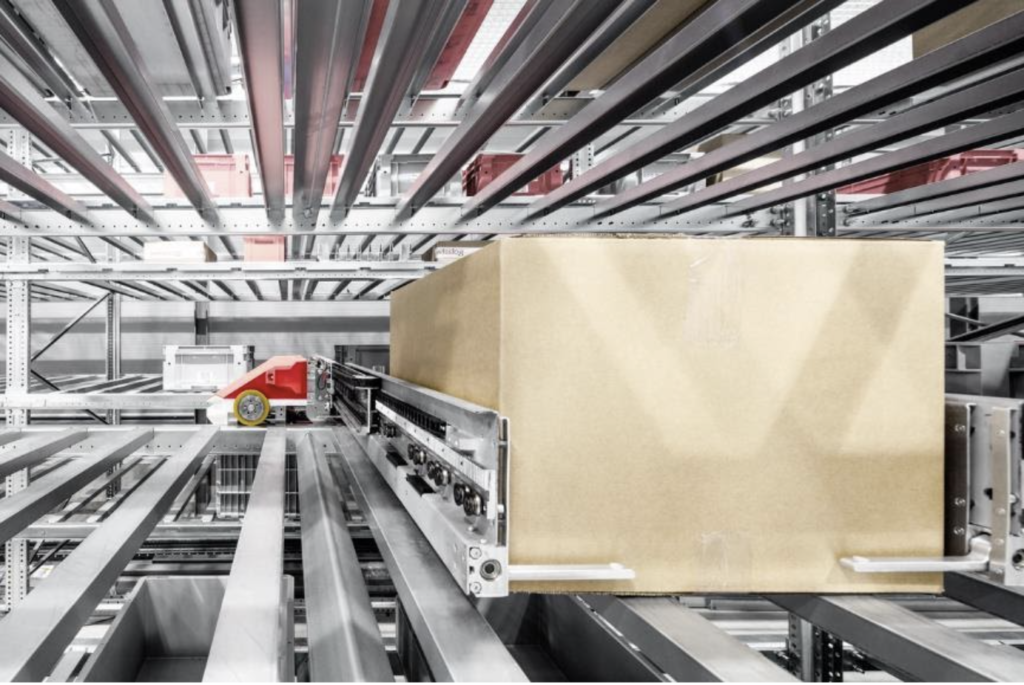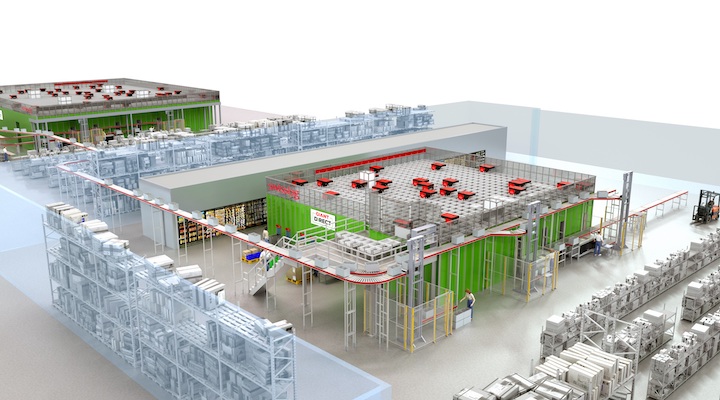Micro-fulfilment centres (MFCs) are the next step in creating a harmonious omni-channel supply chain. Ongoing shifts in the retail landscape, driven by e-commerce, along with changing consumer demands and expectations, are creating an increased need for fast, efficient local fulfilment.
Automated MFCs allow companies with or without a brick-and-mortar footprint within a particular area to move fulfilment closer to consumers in order to reduce transportation costs and enable shorter delivery times, benefitting both the retailer (or Fast Moving Consumer Goods (FMCG) producer), and the consumer.
Companies can build a micro-fulfilment centre as a standalone facility, or inside or bolted on to an existing location, to expand fulfilment capacity. MFCs can support consumer curb-side pick-up, too, or a hybrid of pick-up and delivery.
MFCs are expected to grow sixfold in 2021, a trend that has been further accelerated by Covid-19. While utilising an MFC powered by automation may seem like a no-brainer, since it has benefits for both the retailer and the consumer, there are still a few challenges that inhibit the growth of MFCs globally.
Availability and cost of labour, expensive and appropriately sized real estate, and tricky government regulations can all pose challenges to the installation of an MFC and its ongoing ROI. It’s crucial that an automation partner be aware of the full situation, in order to optimise the results from implementing an MFC.

To achieve the greatest return from an investment in an MFC, grocers, and retailers should look at synergising their online sales and physical storefront. This involves using an existing network of physical point-of-sale infrastructure or real estate property for logistics automation, so the grocer minimises the need to build new pure online facilities.
Grocers that can remove the cost of new land from the equation have an easier path to ROI, especially at the early stages of an MFC automation rollout.
This online and storefront synergy also adds flexibility to operations, which enables expansion in the future. For example, curb-side pick-up could easily be added to meet consumer demand.
“MFCs have experienced huge year-on-year growth in the past three years, and they are expected to grow further in 2021, and in the years ahead,” says Sean Ryan, Head of Sales and Consulting at Swisslog Australia.
“The rise of MFCs can be attributed to a range of factors, including the fact that they benefit both the consumer and the retailer or grocer. Consumers are rewarded with increased choice, shorter and more accurate delivery times and efficient curb-side pickup options. Grocers and retailers are able to utilise a more efficient order fulfilment method – one that reduces labour and transport costs, avoids clogging retail stores with pickers, and supports higher-order demand levels,” says Ryan.
Partnering with an experienced automation provider
MFCs are a relatively new retailing strategy, so to maximise return on investment, it is important to partner with an experienced automation provider – ideally one that already has extensive experience with other models such as Dark Stores and Central Fulfilment Centres (CFCs).
An automation partner will not only have knowledge from other grocery projects, but they will have existing software with required functionality, and they will know the intricacies of handling delicate products or the requirements of cold storage, for example.
With more than 2000 warehousing and logistics automation projects completed worldwide, Swisslog not only has fundamental knowledge in food and beverage, e-commerce and retail, but it has the ability to deliver logistics automation for the whole supply chain network within these industries, starting with large CFC and moving through Dark Store, down to MFC.
In addition to experience with automation equipment, it is important to choose an automation partner with experience in software, too. The software drives the solution, keeps track of data, and analyses that data to further improve processes in the future.
Swisslog’s modular WMS SynQ software provides warehouse management, material flow, automation and 3D visualisation all from a single point of control. It has been designed for dynamic, data-driven supply chains, such as those found in retail and e-grocery industries.
Swisslog has written an in-depth white paper Winning the last mile in the supply chain race: Using micro-fulfilment to synergise online and storefront, which can be downloaded here.






